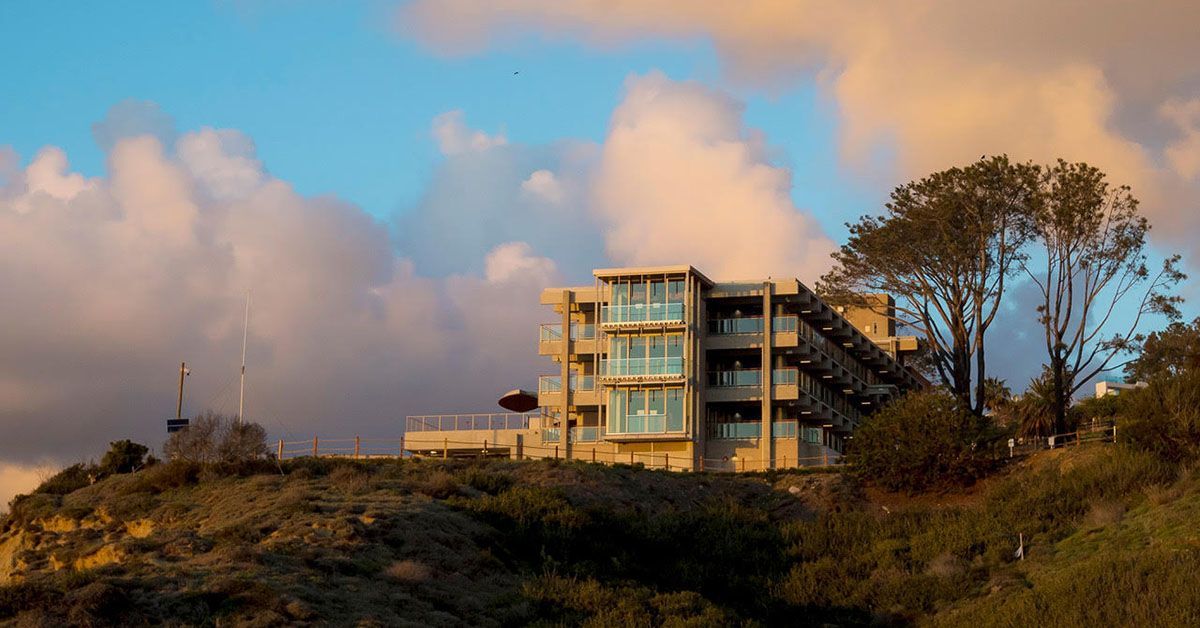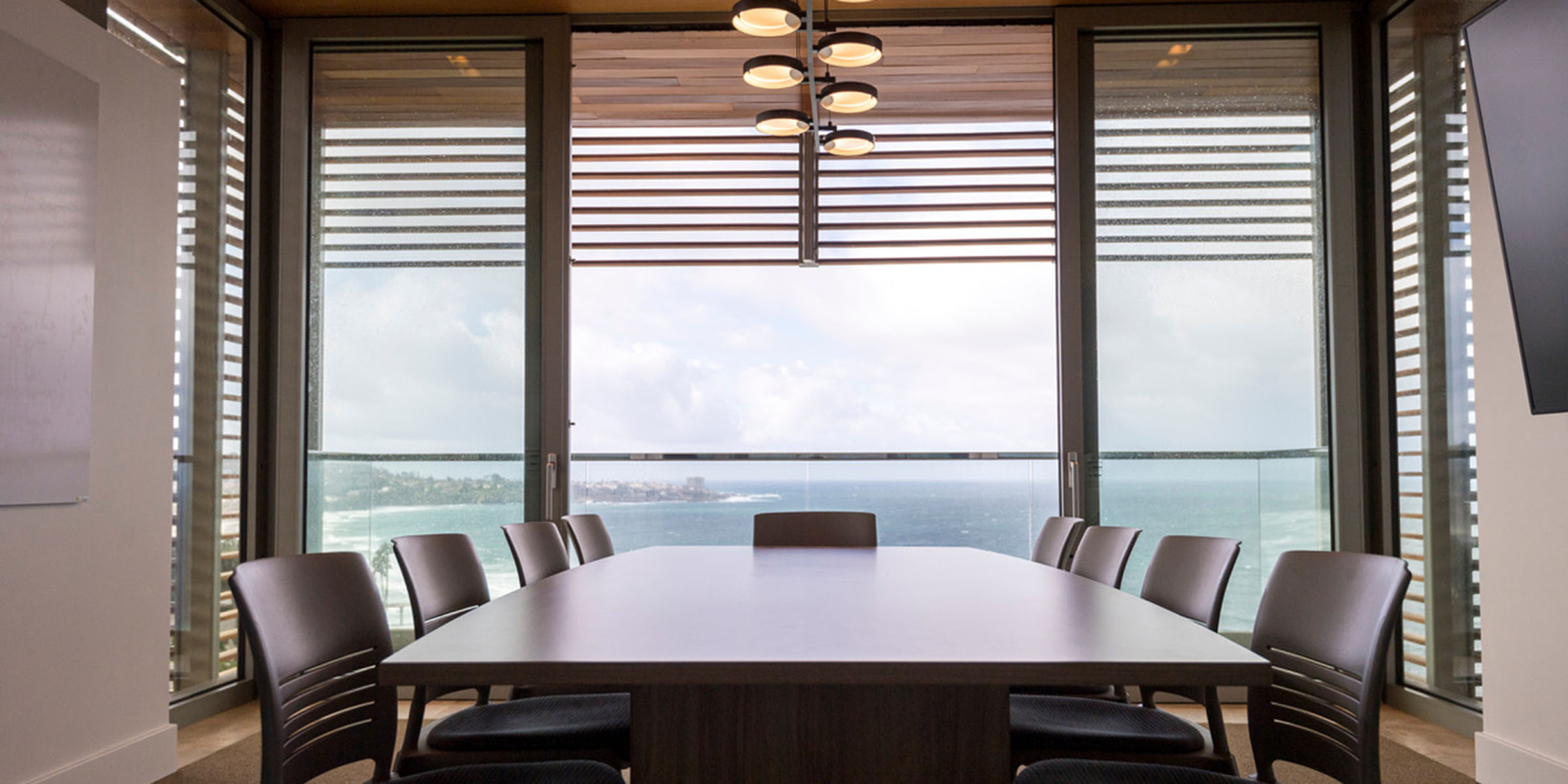UC San Diego Celebrates Opening of Ted and Jean Scripps Marine Conservation and Technology Facility
New facility is dedicated to marine biodiversity and conservation research, discovery and education
Story by:
Published Date
Article Content
The ocean is facing myriad threats including stressors to ecosystems from a changing climate, overfishing, pollution, and more. Finding solutions to mitigate or adapt to these changes will require interdisciplinary research and education—and a place to house this collaborative and cutting-edge science.
Enter the Ted and Jean Scripps Marine Conservation and Technology Facility at Scripps Institution of Oceanography at UC San Diego. Perched upon a hillside with sweeping ocean views, this newly opened facility will facilitate future discoveries and train the next generation of scientists.
Located on the north entrance to Scripps Oceanography, the 40,410-gross-square-foot facility will be the primary location of the Center for Marine Biodiversity and Conservation (CMBC) at Scripps. The center employs an interdisciplinary approach to education of future leaders in marine stewardship, and to research to understand and maintain the integrity of ocean ecosystems in the face of rapid climate change.
A 100-seat lecture hall, and two state-of-the-art class laboratories, supplied with temperature-controlled seawater, will provide high-level undergraduate courses on marine biology, biological oceanography, marine ecosystems and their functioning. These instruction spaces are essential to accommodate the university’s growing enrollment in marine biology, environmental, and conservation coursework.
“This new building is a great example of delivering on the university’s student-centered, research-focused mission in a way only UC San Diego can,” said UC San Diego Chancellor Pradeep K. Khosla. “The laboratories and collaborative spaces support global research and education on the effects of climate change on biodiversity, encourage innovative technology development to understand our ecosystems, and help facilitate collaboration across disciplines.”
The building is named in honor of Jean and the late Edward “Ted” Scripps, thanks to a $6 million gift by Bill and Kathy Scripps, Ed and Christy Scripps, and an anonymous member of the Scripps family, made to honor their parents. This gift was one of many made to construct and outfit the building. Members of the Scripps family and additional supporters of the building celebrated the opening on Scripps campus on May 30, 2023.
Designed by Safdie Rabines Architects, the facility converts and reimagines portions of the first NOAA Southwest Fisheries Science Center, constructed in 1963. The modernized building will serve as the northern gateway to Scripps Oceanography’s campus. Teaching spaces include the lecture hall, two class laboratories—one designed for teaching with live organisms and one focused on marine chemistry—and several conference rooms for seminars and collaborative meetings.
“We’re thrilled to celebrate the opening of this beautiful and highly impactful facility,” said Margaret Leinen, vice chancellor for marine sciences at UC San Diego and director of Scripps Oceanography. “This sparkling new hub for science will provide an unparalleled teaching environment to train and inspire the next generation of scientific leaders, who are needed now more than ever. This is an environment where solutions-based science will thrive, which is key to protecting vital global marine resources.”
Eleven collaborative research laboratories are in the building, as well as offices for faculty, staff, postdoctoral scholars, and graduate student offices. The basement will be dedicated to a 5,000-square-foot saltwater research aquarium, which will be known as the Future Oceans Research Aquarium. It will have chilled, ambient and warm seawater pumped from the Pacific Ocean through the Ellen Browning Scripps Memorial Pier seawater system. The research aquarium will have systems to control important seawater parameters, including temperature, carbonate chemistry (pH), and dissolved oxygen, allowing for important experiments on ocean acidification and impacts of warming oceans, and controlled experiments with various organisms such as corals. The research aquarium is in design, and is anticipated to be completed in 2024, pending additional funding needed to equip and outfit the space. When it opens, it will be the largest such facility in the United States.
A new visualization center will allow analysis and presentation of data sources, such as the vast image assets gathered from the 100 Island Challenge coral reef program or the study of mangrove ecosystems and their ability to sequester carbon. Collaboration with UC San Diego’s Halıcıoğlu Data Science Institute will provide training on modern tools of data science to help solve conservation and resource management problems.
“The building introduces a new set of assets to our community, accelerating the interdisciplinary research collaborations needed to find solutions to some of the most challenging ocean issues facing our generation,” said Stuart Sandin, a Scripps marine ecologist and director of CMBC. “With the inviting design of the building and the unique location overlooking the Pacific Ocean, we look forward to hosting members of the community to learn about the marine environment and the ways that each one of us can improve our relationship with our ocean’s natural resources.”
Classes officially started in the building during the 2023 spring quarter, which includes hands-on undergraduate courses like “Marine Biology Laboratory” and “Experiences in Oceanic and Atmospheric Sciences.” The building will also host coursework on marine conservation, ecosystems and fisheries, biological oceanography, and more.
In the coming year, a sustainability demonstration kitchen will open, with the aim of fostering collaboration between Scripps and NOAA Southwest Fisheries Science Center and for teaching courses in sustainable use of the ocean’s resources. The facility also has space for a coastal view cafe that will be open to the broader public.
Additional philanthropic opportunities remain in the building. Individuals or organizations interested in supporting this hub for global biodiversity and conservation research and education are encouraged to contact the Scripps Development Office at supportscripps@ucsd.edu or (858) 822-1865.
Share This:
You May Also Like
Stay in the Know
Keep up with all the latest from UC San Diego. Subscribe to the newsletter today.














